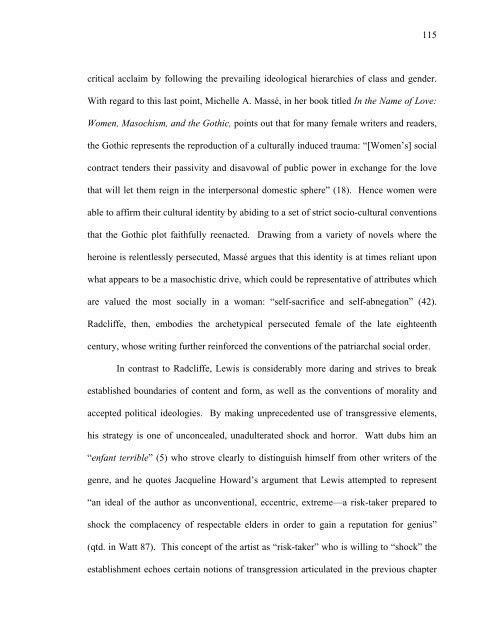Untitled - Sexey's School Moodle
Untitled - Sexey's School Moodle
Untitled - Sexey's School Moodle
Create successful ePaper yourself
Turn your PDF publications into a flip-book with our unique Google optimized e-Paper software.
critical acclaim by following the prevailing ideological hierarchies of class and gender.<br />
With regard to this last point, Michelle A. Massé, in her book titled In the Name of Love:<br />
Women, Masochism, and the Gothic, points out that for many female writers and readers,<br />
the Gothic represents the reproduction of a culturally induced trauma: “[Women’s] social<br />
contract tenders their passivity and disavowal of public power in exchange for the love<br />
that will let them reign in the interpersonal domestic sphere” (18). Hence women were<br />
able to affirm their cultural identity by abiding to a set of strict socio-cultural conventions<br />
that the Gothic plot faithfully reenacted. Drawing from a variety of novels where the<br />
heroine is relentlessly persecuted, Massé argues that this identity is at times reliant upon<br />
what appears to be a masochistic drive, which could be representative of attributes which<br />
are valued the most socially in a woman: “self-sacrifice and self-abnegation” (42).<br />
Radcliffe, then, embodies the archetypical persecuted female of the late eighteenth<br />
century, whose writing further reinforced the conventions of the patriarchal social order.<br />
115<br />
In contrast to Radcliffe, Lewis is considerably more daring and strives to break<br />
established boundaries of content and form, as well as the conventions of morality and<br />
accepted political ideologies. By making unprecedented use of transgressive elements,<br />
his strategy is one of unconcealed, unadulterated shock and horror. Watt dubs him an<br />
“enfant terrible” (5) who strove clearly to distinguish himself from other writers of the<br />
genre, and he quotes Jacqueline Howard’s argument that Lewis attempted to represent<br />
“an ideal of the author as unconventional, eccentric, extreme—a risk-taker prepared to<br />
shock the complacency of respectable elders in order to gain a reputation for genius”<br />
(qtd. in Watt 87). This concept of the artist as “risk-taker” who is willing to “shock” the<br />
establishment echoes certain notions of transgression articulated in the previous chapter



